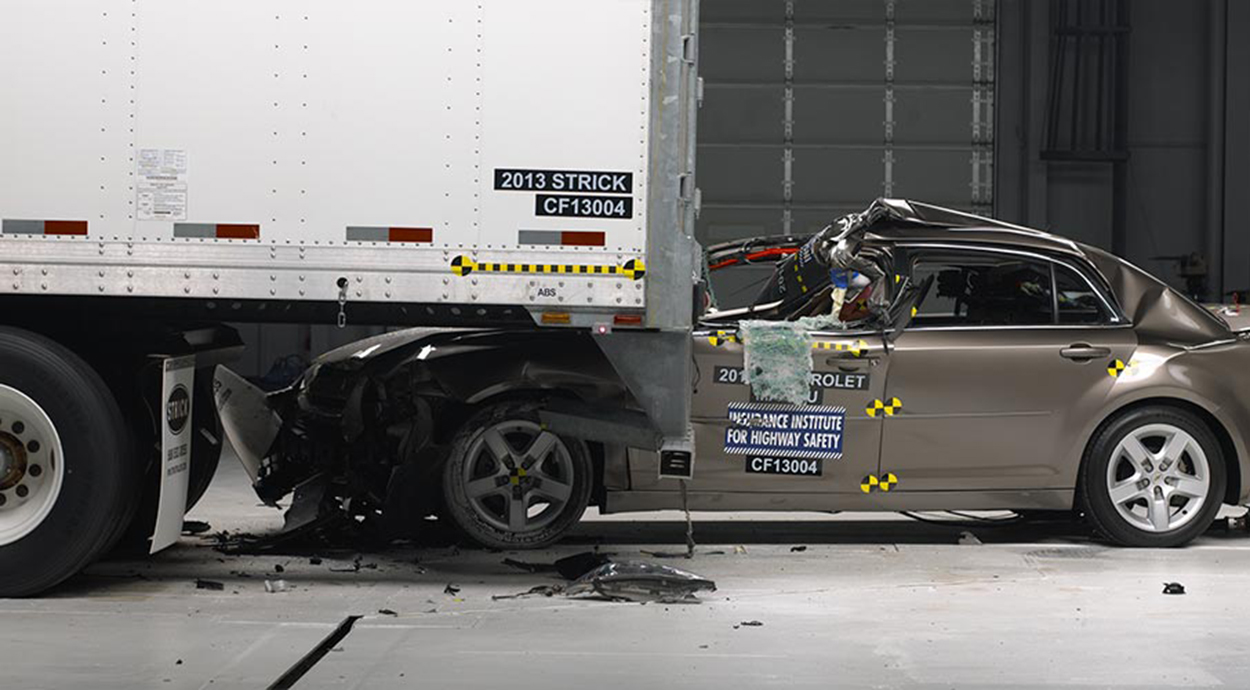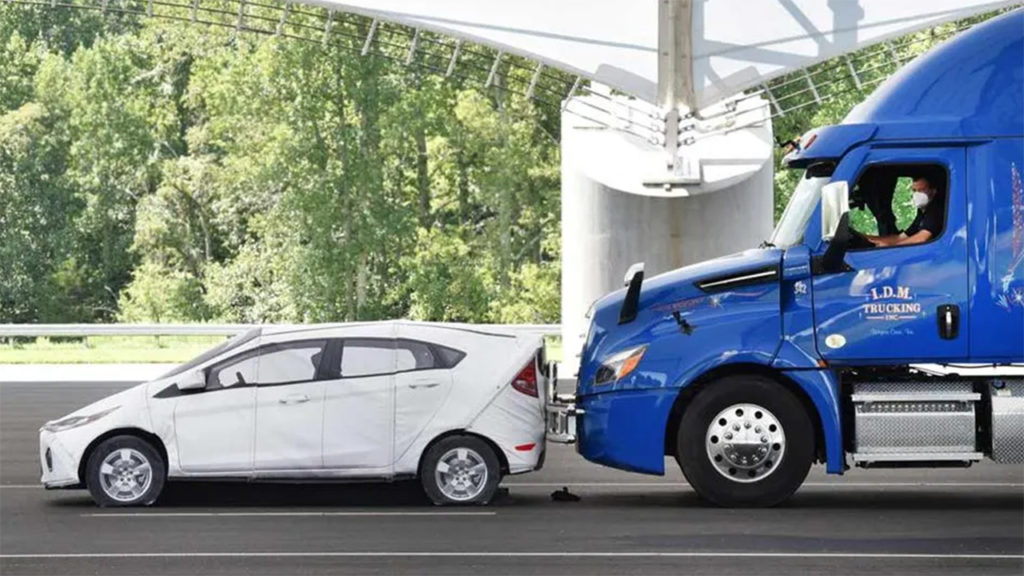
Don’t Overlook Truck Size and Weight (Updated May 24)
Written by William C. Vantuono, Editor-in-Chief
Just when you thought the halls of Capitol Hill couldn’t get any stickier, with misguided, unnecessary safety legislation rising out of the muck, here comes the House Transportation & Infrastructure Committee with proposed legislation that could dispatch far-more-massive, pavement-mulching, bridge-bombing trucks on the national highway system than exist today.
Yes, the ages-old truck size and weight battle has resurfaced, and this industry needs to practice vigilance and make sure that these potential mayhem machines—which could weight roughly 42 tons heavier than the average family-hauling SUV—don’t start navigating our crumbling road infrastructure. It’s time to pull out our spike mauls and try to beat such legislation back into the ground, where it will lie dormant until, like 17-year cicadas, will re-hatch, emerging with earsplitting noise—and the battle begins anew.
As such, we’re fighting a war on two fronts. Long-term casualties are possible on both. Neither can be overlooked or dismissed.

On May 23, T&I marked up its so-dubbed “supply chain package,” actually 18 separate pieces of legislation. “This isn’t an unusual way to do things,” American Short Line and Regional Railroad Association President Chuck Baker, who’s better than most with navigating Capitol Hill, tells me. “It’s basically a markup on a theme that includes many different provisions. The good news, I suppose, on truck size and weight is that each provision, each bill getting marked up, will get its own standalone vote. So, we don’t need to convince members of Congress to vote against an entire supply chain package. We need to convince them to vote against two bad bills—one more serious than the other, but both bad.”
The “really bad one” is H.R. 3372, Establishing a Safety Data Collection Program for Certain 6-Axle Vehicles—a 91,000-pound-truck 10-year “pilot program,” Baker notes. “It doesn’t make sense to call a 10-year program a ‘pilot.’”
“The idea of a 10-year ‘pilot program’ is a farce,” Baker wrote to T&I members. “The legislation claims to create a ten-year pilot program for heavier trucks, but it is really a wholesale evisceration of federal law governing the weight of vehicles on America’s roadways. There is no short-term or ‘pilot program’ nature to the bill – ten years spans the average lifecycle of two full surface transportation reauthorization bills. There are no constraints on the program; for the next decade, under a vague and hazy new framework, USDOT would be forced to let any state that so desires increase its permissible commercial truck weight by almost 14%. And then, at the end of those ten years, the ‘pilot program’ could be extended an additional ten years based on similarly scant, ill-defined criteria. And while the so-called ‘pilot program’ requires some data collection efforts, any information gathered is useless – there is no obligation whatsoever that any action be taken regarding any data on the many new problems that will be presented by the new law.” (Download ASLRRA’s letter to T&I, below, for further details.)
The other “bad bill” concerns auto-hauler trucks. The proposed legislation, H.R. 2948, the Carrying Automobiles Responsibly and Safely (CARS) Act, calls for changing the maximum weight from 80,000 to 88,000 pounds. The rationale is that new cars and SUVs and pickup trucks, as they go electric, will get much heavier. This is true—batteries are much heavier than an empty gas tank—so supporters say they need an 8,000-pound weight increase allowance just to haul the same number of vehicles. “This is less threatening than the 91,000-pound legislation,” says Baker. ”It’s for a specialized type of equipment for a specific reason, but we’re against that it just the same. Obviously, there’s a slippery slope. There’s always a desire to change something on truck size and weight—weight for livestock or length for packages, or weight for ag products within 60 days of harvest, or within 150 miles, or weight on a particular highway in one state. There’s a never-ending list, so we have to be against them all.”
The other 16 other pieces of legislation in this supply chain markup are either good, or ones that the rail industry doesn’t have a strong opinion on—encouraging veterans to enter the rail industry, or making sure that Chinese SOEs “state owned enterprises” can’t win public transit railcar contracts. There’s a provision for speeding up federal permitting and making it more uniform across the federal government. “That’s good,” Baker says. “But these two truck size and weight pieces are horrible.”
Bigger trucks tearing up highways and bridges? We all know who’s going to pay for that: us, the taxpayers.
“The fundamental argument bigger-truck supporters make that I think the rail industry is in a really good place to refute is, ‘If you let us have heavier trucks, we can move fewer trucks,’” Baker points out. “Well, that would be true—in a vacuum. If you can move 800,000 pounds of cargo in 10 trucks right now, and you allow the trucks be 91,000 pounds instead of 80,000 pounds, then you can move that same stuff in nine trucks. That’s obviously true—in a vacuum. In the real world, it shifts the economics of truck vs. rail. Now you have all this marginal freight that is going to choose truck over rail, so you actually end up with probably 11 trucks, not 10, and they’re heavier. The public, the taxpayers, lose, with more trucks on the highway, not to mention more highway deaths. There were 5,800 deaths related to large trucks on the highways last year. If trucks are heavier and longer, it’s obvious that there will be more.”

Independent owner/operator truckers aren’t in favor of this because of the potentially huge financial constraint. If they want to stay competitive, they will have to buy new equipment, which is very expensive. The Owner Operator Independent Driver Association (OOIDA) “is very engaged fighting this, and they’re a big player,” Baker notes. “They don’t want to be forced to buy expensive new equipment, and I would think their people don’t want to drive these bigger trucks. It’s a hard enough job to drive an 80,000-pound truck. Adding 11,000 pounds makes the job harder.”
Who’s behind these bad bills? Is it the trucking lobby? Not really. In truth, it’s 80 very large companies or associations represented by the Shippers Coalition—companies like Anheuser-Busch, Pepsico, Proctor & Gamble, Cargill, American Chemistry Council, International Paper, Scott’s Miracle, Tyson, Smithfield, Coca-Cola, Koch Industries, Campbell’s etc., etc. Some, of these companies are big rail customers, like Cargill.
Are rail service and supply change problems prompting these companies to push for bigger trucks? No really. “I tend to think that no matter what level of service the rail industry was providing, these shippers have always liked the idea of putting more weight in trucks, in addition to railcars,” Baker says. “If our industry decided to universally upgrade from 286K gross rail load to 315K, they would embrace it. Even if railroads were providing the best service we’ve ever provided, and everything was going well, maybe it would take the edge off this push for heavier trucks a little bit, but I think they’d still want them. Their feeling may be, ‘well, the highway cost, the congestion on the road, the accidents, are not our problem.’ But I don’t really blame them. I blame the policy makers who are willing to consider it.”
So, May 23 is a big moment. Now, even if the supply chain package is marked up at T&I with the big-rig measures (and it most likely will occur), there are quite a few steps that would need to happen before it becomes the law of the land. The full House would have to pass it, and along the way it could change. Then, a similar package would have to be moving through the Senate, where the truck size provisions could be included. Then, a final, reconciled version would have to be passed to make it to the President’s desk. But we cannot afford a “wait and see” attitude. Complacency is dangerous.
“We value what happens in the House T&I Committee, and we don’t want them on record supporting this bad idea,” says Baker. “That would be a bad moment, and it wouldn’t set a good precedent.”



